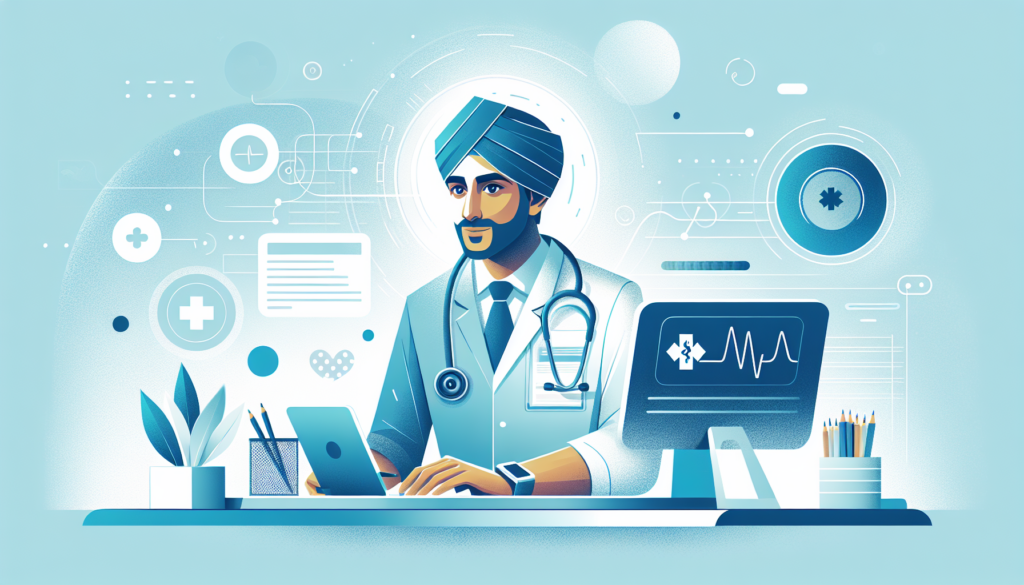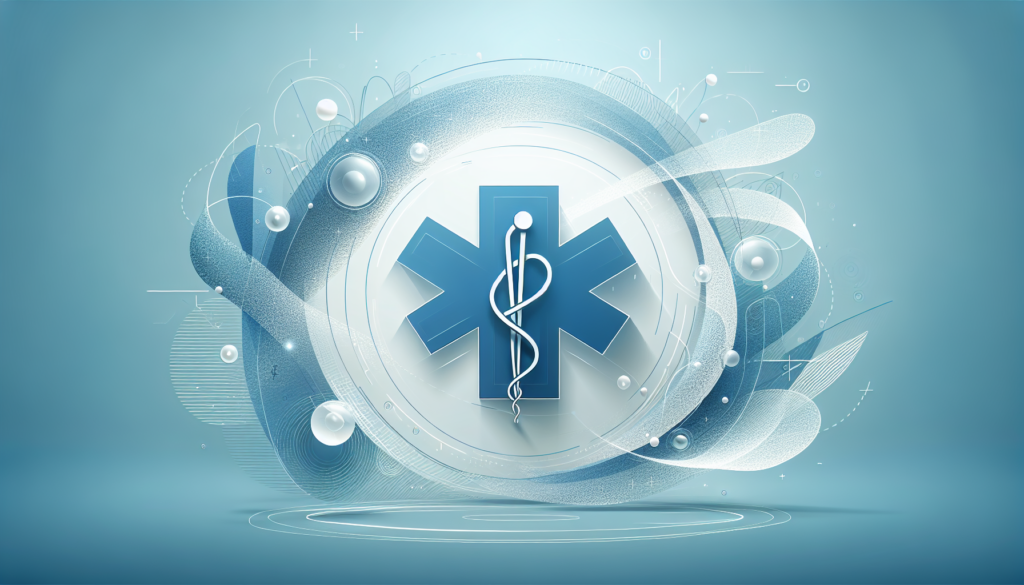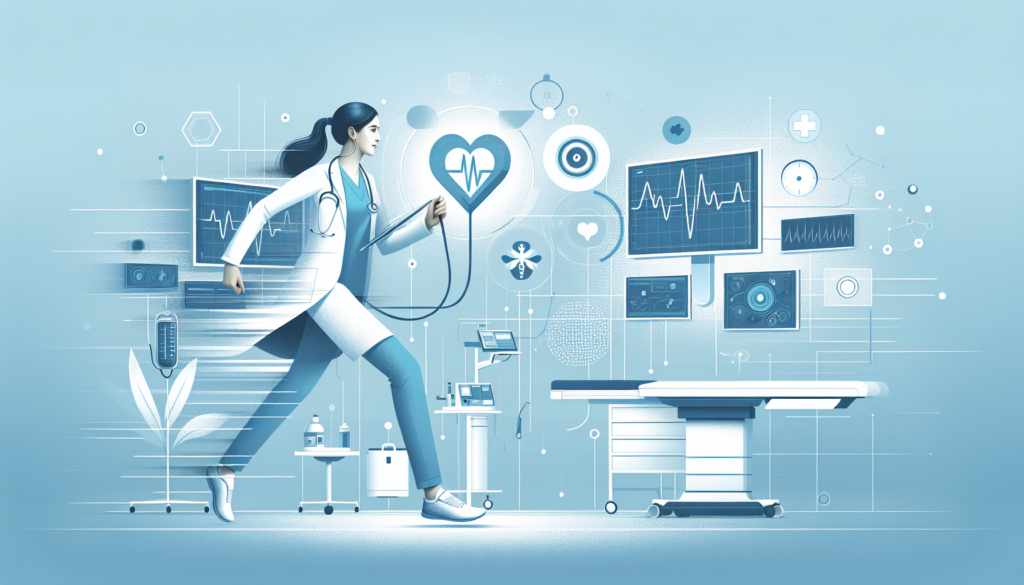Unlocking the Potential of Free Online Medical Transcription Courses
Embarking on free online medical transcription courses is an advantageous step for those interested in joining the healthcare industry without the burden of hefty tuition fees. These courses not only offer flexibility and convenience but also provide the foundational knowledge required for an aspiring medical transcriptionist. The potential of these courses lies in their accessibility; they make the field more inclusive, allowing individuals from diverse backgrounds to acquire key skills and enter a sector that is critical to patient care. One significant benefit of such courses is that they enable learners to become familiar with medical terminology, a vital aspect of medical transcription which ensures accuracy when converting voice-recorded medical reports into written text.
While these free courses may vary in depth and complexity, many of them cover a range of essential topics to give learners a well-rounded introduction to the profession. The curriculum often includes:
– **Medical terminology:** Understanding the language of medicine is crucial for accurate transcription.
– **Anatomy and physiology:** Knowledge of the human body helps in comprehending the context of medical reports.
– **Legal aspects and patient privacy:** Familiarity with HIPAA regulations safeguards patient confidentiality.
– **Audio-transcription practice:** Hands-on experience is imperative to develop the listening and typing skills needed to transcribe effectively.
By exploring these free resources, individuals gain the opportunity to test their aptitude for the discipline without financial pressure. Additionally, many of these programs are designed to simulate real-world scenarios, offering a glimpse into the daily tasks of a professional medical transcriptionist. The combination of theoretical knowledge and practical skills equips students with the confidence to pursue further education or directly jumpstart their careers.
Moreover, technology’s role in transcription has expanded, and these courses often provide introductions to the latest software and electronic health record (EHR) systems that are reshaping the medical documentation landscape.
The benefits of free online medical transcription courses also extend beyond individual advancement. As technology evolves, so too must the workforce. With the digital transformation of healthcare, such as the integration of AI-powered digital scribes like Scribemd.ai, the demand for technologically literate medical professionals is on the rise. These courses lay the groundwork for a much-needed bridge between traditional transcription skills and the evolving nature of digital documentation, ultimately contributing to the broader healthcare ecosystem. Here are ways how the right course can help a candidate stay current with industry trends:
– **Familiarization with digital transcription tools:** Learning about software that can aid transcription work.
– **Understanding of AI integration:** Gaining insights into how AI is changing the transcription field.
– **Adaptability to new practices:** The ability to transition from traditional methods to contemporary, tech-driven procedures.
By remaining informed and adaptable, healthcare professionals can meet the demands of a sector continually enhanced by technological innovation, ensuring their skills remain relevant and valuable.
The Benefits of Learning Medical Transcription Online for Free
The healthcare industry is evolving rapidly, with technological advancements shaping the way medical services are delivered and managed. Among these changes, medical transcription is an essential service that converts voice-recorded reports as dictated by physicians into text format. Learning medical transcription online for free offers a suite of invaluable advantages for aspiring healthcare professionals and current medical practitioners seeking to enhance their skill sets. One of the primary benefits includes the flexibility and convenience of studying from any location at any time, a feature particularly significant for those balancing busy work schedules or personal commitments.
Moreover, free online medical transcription courses allow individuals to explore and assimilate this specialized knowledge without financial strain. Not only does this remove the barrier to entry for individuals interested in the field, but it also contributes positively to the overall healthcare system by creating a larger pool of skilled transcriptionists. As the demands for meticulous medical documentation grow, so does the value of having proficient transcriptionists who can ensure accurate patient information is readily available for healthcare providers, enhancing the efficiency and quality of patient care.
Cost-Effectiveness and Accessibility
- No course fees: Eliminating the cost barrier allows those who might otherwise be unable to afford professional training to gain valuable skills.
- Reduced additional costs: Free online learning eliminates associated costs such as commute, textbook purchases, and classroom materials.
- Access to a broader range of resources: Online platforms often provide rich libraries of content that can be updated more swiftly than traditional textbooks.
Learning at Your Own Pace
- Self-directed learning: You decide your learning tempo, which encourages thorough understanding over hurried, surface-level memorization.
- Flexible scheduling: Perfect for those who need to balance learning with other professional or personal responsibilities.
- Review materials at will: Online learning platforms typically afford learners the opportunity to revisit lectures and materials as needed.
Lastly, self-paced learning emphasized in online courses enables individuals to internalize transcription protocols and practices more efficiently. This added level of understanding fosters competence and confidence, which are crucial in making accurate medical transcripts. The learning format also allows for instant feedback on transcriptions submitted, aiding in the quick identification of areas for improvement. This notion of continuous learning and improvement is essential in the medical field, where precision in documentation can significantly impact patient outcomes and healthcare service delivery.
Finding the Right Free Online Medical Transcription Course: A How-To Guide
Embarking on the journey to become a proficient medical transcriptionist usually begins with a comprehensive educational step – i.e., undertaking a medical transcription course. However, the costs associated with training programs can be a barrier for many aspiring professionals. Fortunately, the internet provides a wealth of free online medical transcription courses, though finding the right one that matches your learning needs and professional goals requires careful consideration. Begin by assessing the pedigree of the course offerings. Esteemed institutions often extend introductory courses on platforms like Coursera or edX without cost, which can be a valuable starting point. Ensure that these free resources cover fundamental topics like medical terminology, healthcare documentation, and the nuances of the transcription process itself.
When looking for the ideal free online course, it’s crucial to consider the course content’s depth and relevance. The best courses deliver a balance of theoretical knowledge and practical skill-building. For a course to be truly beneficial, it should cover a range of necessary skills including:
– Understanding of medical jargon and abbreviations
– Nuances of grammar and punctuation in the medical context
– Audio transcription practices
– Use of transcription software
Furthermore, the course should offer a combination of audio and visual learning material, quizzes, and assignments to reinforce your understanding and competency in the field. Additionally, engagement with an online community or forums to discuss coursework can prove invaluable for a rounded educational experience.
Accessibility and flexibility are additional factors to weigh in when choosing a free online medical transcription course. As most seeking these courses are often balancing employment or other commitments, the ability to access course materials at any time is crucial for consistent learning. So, look for a course that offers self-paced learning with unrestricted access to the material. This way, you can learn at your own rhythm and return to complex sections as required. It’s also recommendable to check if the course provides any certifications upon completion, which can be a notable addition to your resume, reflecting your dedication and newly-acquired skills to future employers.
Finally, it’s important to research the course’s success rate and read reviews or testimonials from previous students. The feedback from peers can provide insight into how the course has helped them in their careers, the challenges they faced, and how they overcame them. Gathering this information will help you gauge the quality of the program and its relevance to real-world medical transcription jobs. A free online course that encourages ongoing learning, such as transitioning to advanced paid courses or additional resources, signals an investment in the learners’ long-term career growth and is often indicative of a high-quality program.
Maximizing Your Learning Experience with Free Medical Transcription Training
Embarking on a career in medical transcription can be both rewarding and challenging, especially given the precision and knowledge required in this field. One way to enter this arena with confidence and skill is through free medical transcription training. Such programs are a boon for those looking to gain a foothold without the burden of initial costs. By focusing on the essentials of medical terminology, pharmacology, anatomy, and healthcare documentation, these free training opportunities can provide a robust foundation for aspiring transcriptionists. Additionally, practical exercises that include actual dictation practice play a crucial role in familiarizing students with the nuances of the job.
While the prospect of free training is enticing, it’s also important to assess the quality of the education you receive. The best free medical transcription training resources offer a comprehensive curriculum that addresses key competencies of the industry. A well-rounded program should encompass:
– Core medical knowledge
– Understanding of patient privacy laws
– Hands-on dictation experience
– Familiarity with transcription technology
– Insights into medical record formatting
– Techniques for proofreading and editing
In maximizing your learning experience, seek out free training that incorporates real-world examples and interactive elements. It’s these practical components that help bridge the gap between theoretical knowledge and applied skill. Another aspect not to be overlooked is the importance of feedback. Access to seasoned professionals who can offer guidance and critique is invaluable, helping you to fine-tune your abilities and better prepare for the demands of the profession. As the medical landscape evolves, staying current with ever-changing industry standards is crucial, and the right training program can help establish a lifelong habit of learning and adaptation.
Finally, free medical transcription training serves as an important stepping stone for those looking to advance their career prospects. It often includes an introduction to the latest medical note-taking technologies, such as AI-powered platforms like Scribemd.ai, which are transforming the healthcare documentation process. In understanding these tools, you not only position yourself as an adaptable and forward-thinking transcriptionist but also as a valuable asset to healthcare providers seeking to optimize their practice’s operations. With the right training, you will be well-equipped to enter the workforce and excel in a role that requires precision, attention to detail, and a commitment to continuous learning.
Transitioning into a Career After Completing an Online Medical Transcription Course
Embarking on a new career after completing an online medical transcription course is a promising step towards a future in the healthcare documentation field. This transition demands not only the skills and knowledge obtained from the course but also a strategic approach to entering the job market. Newly certified medical transcriptionists should focus on perfecting their transcription skills and familiarizing themselves with medical terminology and healthcare procedures. Additionally, it’s critical to understand their role in the broader context of healthcare delivery, where accurate documentation is essential for patient care and legal compliance.
To ensure a smooth transition, aspiring medical transcriptionists should consider the following key areas:
- Resume Building: Highlighting transcription coursework, certifications, and relevant skills tailored to the medical transcription field is crucial.
- Networking: Engaging with professionals in the industry through online forums, social media groups, and professional associations can open doors to job opportunities.
- Practical Experience: Gaining hands-on experience through internships or volunteer work can be incredibly beneficial.
- Research Potential Employers: A thorough understanding of potential workplaces, such as hospitals, clinics, or transcription services, will aid in the job search.
Upon transitioning into their new role, medical transcriptionists should also focus on continuous learning and professional development. Staying abreast of the latest industry advances and technology is imperative for career progression. Tools like Scribemd.ai, an AI-powered digital scribe designed to assist medical professionals by automating medical note-taking, represent the evolving landscape that medical transcriptionists operate in. Such technology complements transcriptionists’ work by enhancing productivity and accuracy, emphasizing the importance of adaptability and the willingness to embrace innovation in a tech-centric healthcare environment.
Finally, it’s important for individuals entering this field to understand the dynamics of remote work, as many transcription jobs offer the flexibility of working from home. This option necessitates a high level of self-discipline, time management, and a reliable home-office setup. Embracing the remote work model can offer a balance between personal and professional life, but it requires a dedicated approach to maintain productivity and communication with healthcare professionals and fellow transcriptionists. This career transition, therefore, requires careful planning and proactive steps to align with the demanding yet rewarding field of medical transcription.



